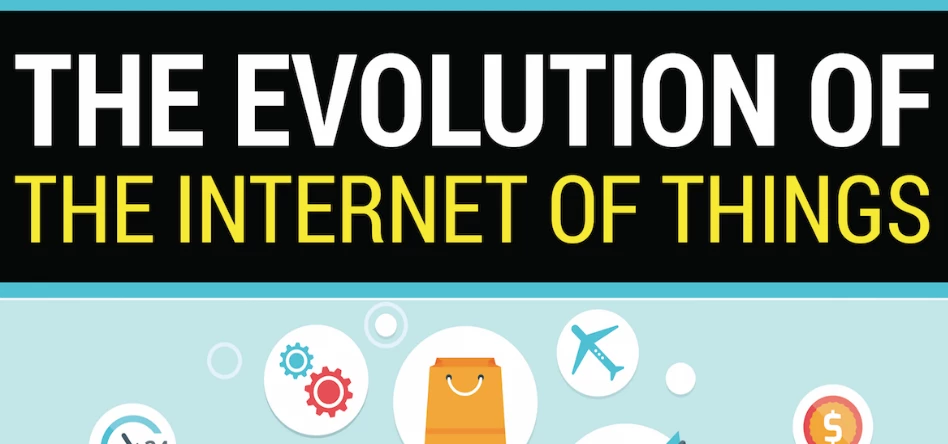
Infographic: The Evolution of the Internet of Things
Imagine a world where your fridge is talking to your phone, your toothbrush is talking to your dentist and your home lighting takes cues from your Netflix viewing choices. The future is closer than you might think; just ask anyone with a wearable fitness device. The Internet of Things – the term for a connected network of smart devices – is quickly gaining momentum, and is all set to disrupt and revolutionise industries as far-reaching as waste management and health care in the next four years.
In a recent report from Gartner Inc, it is predicted that that 5.5 million new devices will get connected every day in 2016, and we’ll be surrounded by 20.8 billion connected devices by 2020. Using the results of this report, specialist recruiters Lucas Blake commissioned this insightful infographic to help us make sense of the growth of the Internet of Things.
The report distinguishes between two types of connected things, cross-industry devices and vertical-specific devices. Cross-industry are generic devices that have a use in a number of industries, for example, connected light bulbs to increase energy efficiency. Vertical-specific devices are more specialised, and serve one function, such as contain shipping tracking devices. These are separate from consumer devices, such as smart heating systems or wearable devices.
In terms of consumer hardware spending, it is predicted this number will reach $546 billion by the end of 2016, while enterprise spending (cross-industry and vertical-specific combined) will total $868 billion in the same time period. Consumer spending is set to overtake enterprise spending by 2020, with $1,534 billion in consumer spending and $1,477 billion in enterprise spending. Compare this to just two years ago, when consumer spending and enterprise spending was $3,807 combined.
Growth and innovation of this magnitude cannot happen without addressing a considerable number of risks. Security is one of the primary concerns; just imagine how interesting your Nest heating schedule could be to a sticky-fingered burglar. The same goes for businesses, as they could potentially be allowing smart devices to transfer sensitive customer data. This isn’t a new threat: when biometric passports were first introduced, it was soon discovered the data could be accessed from 30ft away using a widely-available device. Ensuring the data cannot slip into the wrong hands will be a key factor in ensuring the growth of the Internet of Things.
To go from 3,807 units installed in 2014 to 20,797 in 2020 will put enormous strain on the networks they use to transmit the data. Further investment in infrastructure will be essential, as these new devices will increase pressure on bandwidth at a time when demand is being stretched in all directions. The opportunities for growth are immeasurable, but not without careful and considered expansion. There are still numerous untapped industries that could benefit from the introduction of the Internet Of Things, and how these innovations will shape our lives in the future remains to be seen.
This was posted in Bdaily's Members' News section by Kat Kynes .
Enjoy the read? Get Bdaily delivered.
Sign up to receive our popular morning National email for free.








 When will our regional economy grow?
When will our regional economy grow?
 Creating a thriving North East construction sector
Creating a thriving North East construction sector
 Why investors are still backing the North East
Why investors are still backing the North East
 Time to stop risking Britain’s family businesses
Time to stop risking Britain’s family businesses
 A year of growth, collaboration and impact
A year of growth, collaboration and impact
 2000 reasons for North East business positivity
2000 reasons for North East business positivity
 How to make your growth strategy deliver in 2026
How to make your growth strategy deliver in 2026
 Powering a new wave of regional screen indies
Powering a new wave of regional screen indies
 A new year and a new outlook for property scene
A new year and a new outlook for property scene
 Zero per cent - but maximum brand exposure
Zero per cent - but maximum brand exposure
 We don’t talk about money stress enough
We don’t talk about money stress enough
 A year of resilience, growth and collaboration
A year of resilience, growth and collaboration